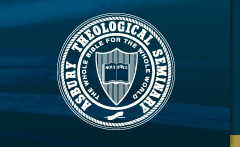
ATS Dissertations
Files
Download Full Text (44.9 MB)
Summary
The HIV/AIDS pandemic has continued to ravage many populations in the world. Sub-Saharan Africa has become the home of millions of HIV/AIDS orphans and the numbers continue to grow. A major repercussion of the pandemic is that the traditional extended family network within this African context has been overwhelmed. Many of the AIDS orphans are now cared for by elderly grandparents. This study shows how the Kikuyu tribal system is supposed to work in providing care for its orphans. The study examines how some of the contemporary factors, particularly the spread of the HIV/AIDS pandemic, have affected this tribal system. The study shows how the local Kikuyu churches, in Escarpment (Mwimutoni village), and other orphan-care models
within Kenya are currently responding to the orphan crisis. The main theories guiding this study are: (1) The Mission Station and People Movement Mission Strategies as discussed by Donald McGavran (1955); (2) The Modality and Sodality Structures of Mission as defined by Ralph Winter (1999); (3) The Diffusion of Innovation theories (Roger 1995); and (4) The Transformation and Integral Model o f mission (Samuel 1999). The Mwimutoni Center o f Hope is presented as a 21 51 century "network of partnerships" model in responding to the HIVIAIDS pandemic and orphan crisis within the Sub-Saharan African milieu. This paradigm in mission is Christ centered, decentralized, locally based, and globally connected.
This is a qualitative missiological study. The main methods of gathering research data were: participant observation, ethnographic field interviews, and a survey of the relevant literature. The "grounded theory" approach formed the basis for data analysis and subsequent missiological interpretation-in this research approach, theory emerges from the data gathered (Strauss and Corbin 1998).
The traditional Kikuyu tribal system is presented in Chapter Two, and the effects o f British colonialism and rural-urban migration are also briefly discussed. Chapter Three looks at the global scope ofthe HIV/AIDS pandemic, and then focuses on the Kenyan, Sub-Saharan African context. Various "institutional" and "household-based" orphan-care options are presented in Chapter Three.
Chapter Four includes the biblical, theological, and missiological foundations for responding to the needs of orphans and other vulnerable in community. A more detailed account ofthe various responses to the AIDS orphan crisis in Kenya is then provided in Chapter Five. The final chapter is a mis'siological analysis of some of the contemporary orphan-care models presented in this study. Chapter Six concludes by discussing how the church (local, national, and global) can continue to respond to the HIV/AIDS pandemic and orphan crisis within Escarpment, and offers recommendations for further research.
OCLC
166404425
Series
Thesis (Ph. D.), 2007
Publication Date
4-2007
Adviser
Michael Rynkiewich
Keywords
2007, Ph., D., 166404425, Orphans, Kenya, Children, AIDS, Patients, Missions, Disease, Kikuyu, African, People, Mwimutoni, Center, Hope, Escarpment, Kenya
Disciplines
Other Religion
Biography
Includes bibliographical references (leaves 249-263).
Call Number
BV3625.K4 K54 2007
Language
English


Comments
Thesis (Ph.D.)--Asbury Theological Seminary, 2007.